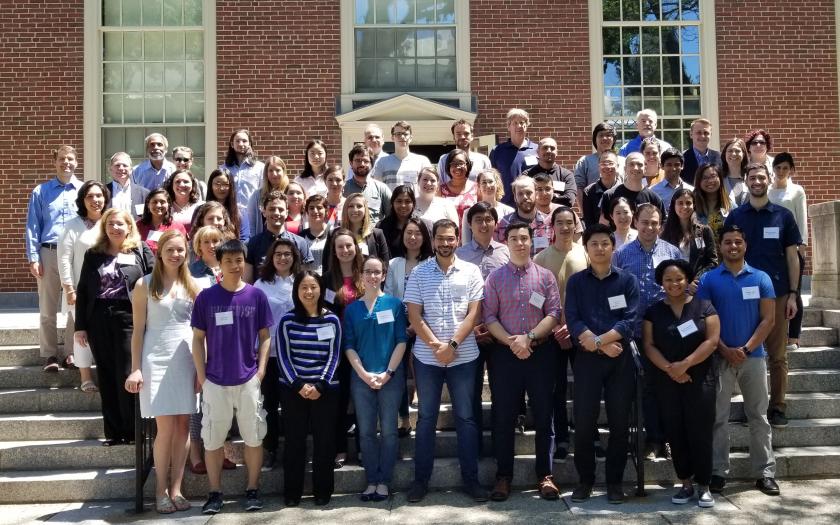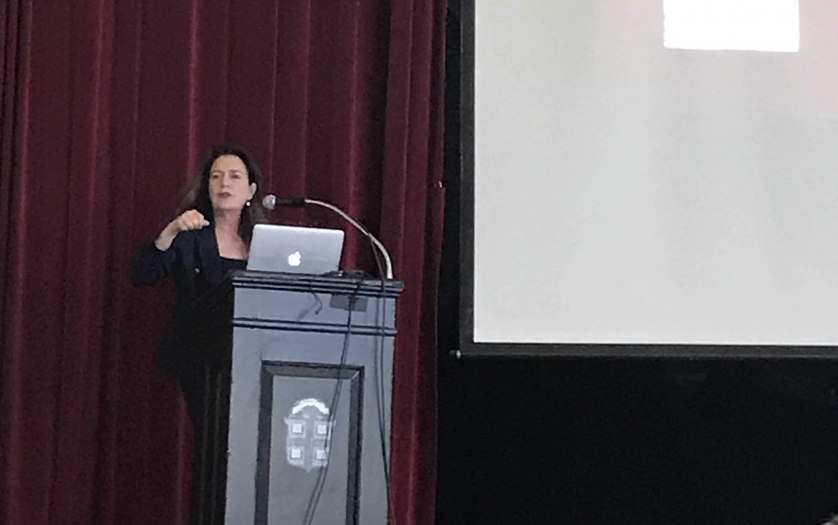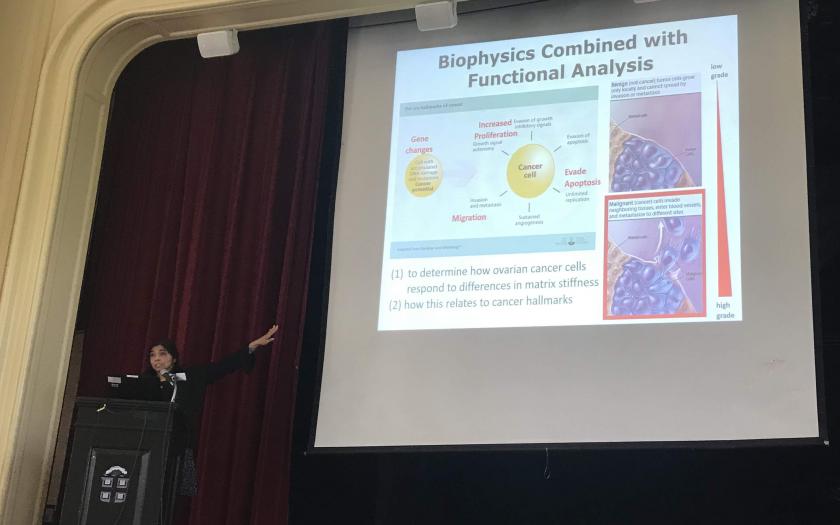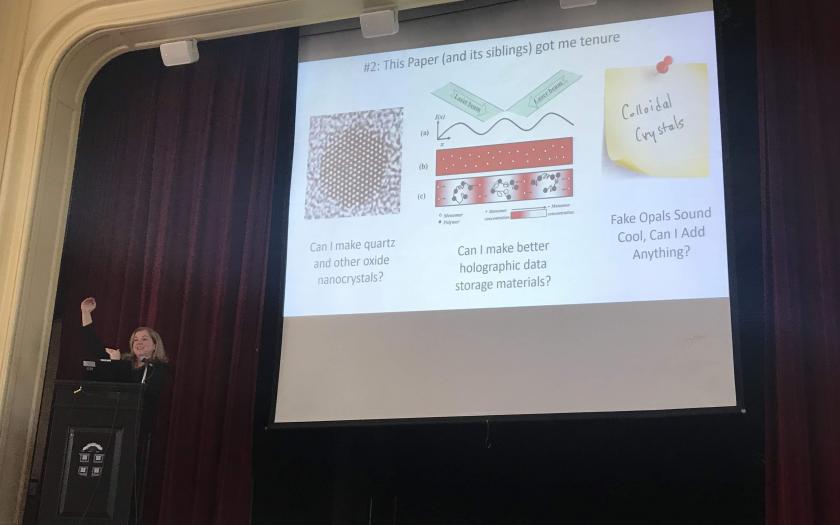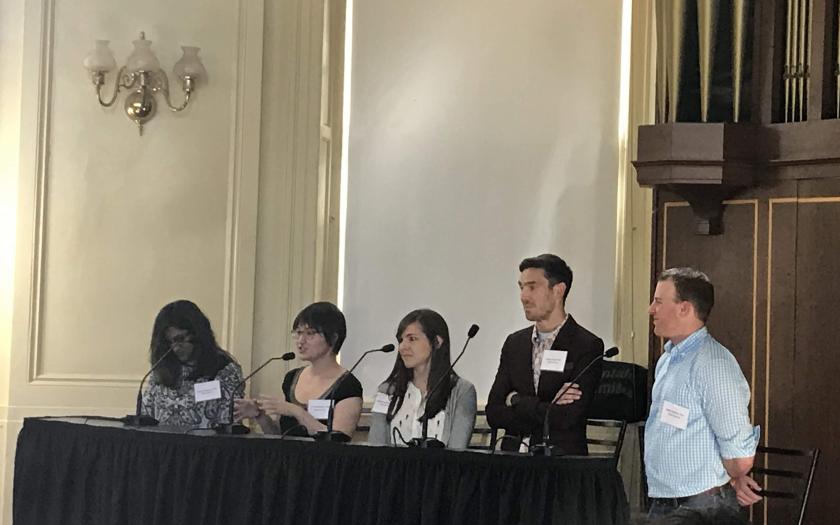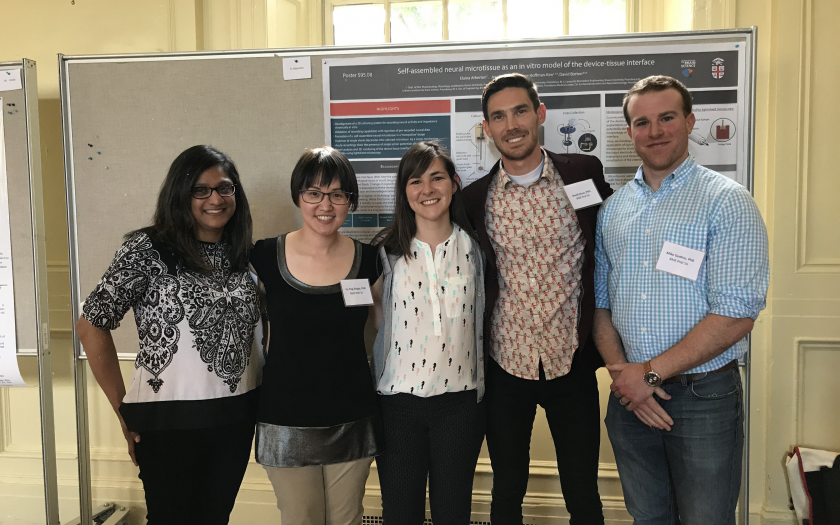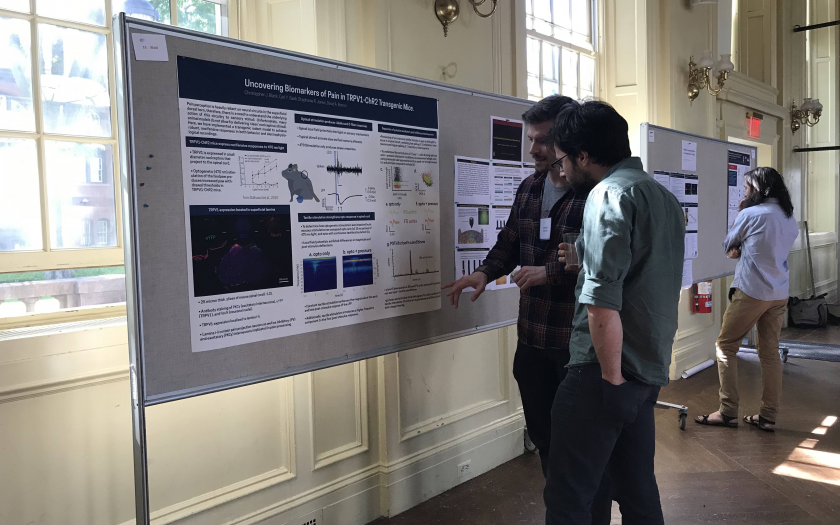Students and Faculty Gathered (Again) for the Annual BME and Biotech Retreat
Graduate students and faculty affiliated with our Biomedical Engineering and Biotechnology graduate programs gathered Monday, May 21st in Alumnae Hall to participate in design challenges, networking events, alumni presentations, and poster sessions. The event planning was spearheaded by Professor Kareen Coulombe and infused with new ideas and goals. The mission of the Spring 2018 BME and Biotech Retreat was to focus on our science with enhanced communication and collaboration between faculty and students, between research groups, and across our diverse disciplines for improving our community and advancing our research and training program.
The day was kicked off by a keynote address from Nadia Rosenthal, PhD, FMedSci, Scientific Director and Professor at the Jackson Laboratory for Mammalian Genetics in Bar Harbour, ME. Rosenthal gave an engaging and inspiring talk highlighting her toolbox of techniques in molecular genetics with a focus on application to cardiac development, aging, and tissue repair.
Students were then asked to engage and collaborate in a design challenge. Diverse teams, spanning expertise and experience, were asked to identify technology from their labs and research and then select one of these technologies to apply to a novel problem from a different research lab. Teamwork and brainstorming resulted in proposals to apply technologies like nanoparticles, transparent electrodes, responsive polymer coatings, optical coherence tomography, X-ray Reconstruction of Moving Morphology, microfluidics, mechanobiology platforms to gain new insights into inflammation, real-time neuronal recording, stem cell isolation and sorting, neural device implantation, primate limb kinematics, personalized cancer theranostics, and collagen disorders.
After lunch, we quizzed Professors Greg Jay, Edith Mathiowitz, and Anita Shukla on topics outside of their job, inspired by the NPR segment: Not My Job. We quizzed Edith Mathiowitz, an expert in polymers and patents, on Jello intellectual property. Greg Jay, a joint lubrication expert, was quizzed on Grease, and Anita Shukla, an expert in designer biomaterials, was quizzed on designer dresses. These lighthearted questions broke the ice before these faculty members fielded questions about their career paths and goals that were submitted by students.
Other faculty members presented on some of their past and recent work. Professor Michelle Dawson discussed a journey to publish findings that went against the conventional thought in cancer progression and mechanics, and Professor Braden Fleming described his recent work on a Phase I Clinical Trial but pointed to the years of pre-clinical work necessary beforehand. Professor Vicki Colvin, Director of the Center for Biomedical Engineering, discussed the papers that made her a clear choice for tenure. “Simple methodological papers can have a great impact,” she reminded students. “Those papers you think are so simple that someone must have thought of them before - they’re often very high impact.” Professor Trey Crisco discussed his recent work describing common in vivo 3D wrist movements using HAM variables. “Prosthetics for the hip and knee have been very successful,” he said. “But the axis of rotation of the thumb carpometacarpal joint moves up and down and processes during movement, so the success rate of [these prostheses] is very low.” He also encouraged students to ask their mentors for help writing reviews to get experience reading the literature.
Alumni returned to give advice and discuss some of the paths PhD graduates can take. “To succeed in grad school, you need persistence, dedication, and the drive to keep moving forward,” said Roshni Rainbow PhD ’11. “There may be long stretches of time when you don’t necessarily get results.” Several of the other alums attending the alumni panel mentioned similar periods of doubt and perseverance. “When you feel like [your project] isn’t impactful, have a new set of eyes look at it,” said Yu-Ting Dingle ’06 ScM ’07 PhD ’15. She also encouraged students to take care of their mental health and seek out resources when they struggle. “Know when to set aside your experiment and pick up something else,” advised Kim Waller PhD ‘13. “Early in grad school, a mentor told me ‘Science is hard. You need to work harder if you really think this is true.’ That was difficult to hear.” David Stout PhD ’14, talked about feeling scared after forgoing a postdoc for a tenure track position at Cal State Long Beach. “Impostor syndrome hit me hard during the transition - but then I realized I went to school for 22 years,” he said. “My chair told me to fake it till I made it, which was a good perspective because I realized I wasn’t alone in feeling nervous.” He reminded students that “a PhD is to build the tools you need to become an expert, not to actually become a perfect expert. Failing is a good thing when you learn something from it and can apply that to another area.” The alums also discussed some of the other roles they play in life outside of engineering. “At home I do a lot of time management and organization,” said Dr. Dingle. “I’m a mom of two young kids, so I have to be home to pick them up now.” Dr. Rainbow also emphasized the importance of time management. “I’m a teacher, a mom, and the maker of all the lunches in my house. It’s become harder to make time for everything.” Other alums mentioned activities such as soccer and running as sources for relaxation. “Find something active that keeps you excited and energized,” recommended Dr. Stout. “My boys think I’m crazy because I run marathons.”
Graduate students ended the night by presenting their research in an informal poster session and happy hour. Shashank Shukla, a 3rd-year graduate student in the Shukla lab, presented his work on using hydrogels for drug release. “We can increase the polymer concentration [in the hydrogel] and increase the storage and loss modulus correspondingly, and we’ve characterized the gels using X-ray tomography,” he said. “We hope to use X-ray tomography to measure drug release in the future.” Kali Manning, a third-year in the Morgan Lab, discussed her research on novel microtissue manipulation techniques. She works with cells shaped into toroids using agarose molds. “We can form biotubes by stacking and fusing them together, and incorporate multiple cell lines,” said Manning. Students enjoyed practicing their scientific communication skills and talking with people outside their immediate area of expertise. Overall, the day brought together students and faculty from across campus and hopefully revived and inspired new ideas and collaboration.
